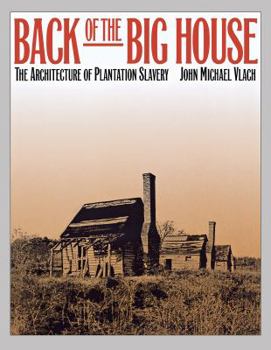Back of the Big House: The Architecture of Plantation Slavery
(Part of the Fred W. Morrison Series in Southern Studies Series)
Select Format
Select Condition 
Book Overview
Behind the "Big Houses" of the antebellum South existed a different world, socially and architecturally, where slaves lived and worked. John Michael Vlach explores the structures and spaces that formed the slaves' environment. Through photographs and the words of former slaves, he portrays the plantation landscape from the slaves' own point of view.
The plantation landscape was chiefly the creation of slaveholders, but Vlach argues convincingly...
Format:Paperback
Language:English
ISBN:0807844128
ISBN13:9780807844120
Release Date:May 1993
Publisher:University of North Carolina Press
Length:278 Pages
Weight:1.83 lbs.
Dimensions:0.8" x 8.5" x 11.1"
Related Subjects
Abolition African Americans African-American Studies Architecture Arts, Music & Photography Buildings Discrimination & Racism Education & Reference History Home Improvement & Design Humanities Politics & Social Sciences Race Relations Reference Slavery & Emancipation Small Homes & Cottages Social Science Social Sciences Specific Demographics State & Local Textbooks WorldCustomer Reviews
2 ratings
History through Architecture
Published by Thriftbooks.com User , 20 years ago
This study of vernacular architecture is a great contribution to the social history of slavery. By looking at facets of design such as settlement patterns and the formal qualities of buildings, Vlach shows how patterns in material culture provide clues for understanding the patterns of history that one can read by examining the buildings. This remarkable book not only documents plantation architecture as an important contribution to the historical record, but it also provides a fascinating interpretation of the subject. It is an especially important study because of the dearth of written documents left by slaves.
Excellent Study of Plantation Architecture
Published by Thriftbooks.com User , 22 years ago
John Vlach's book is a thorough study of the architecture of plantation slavery in the South. He primarily used resource materials from the 1930s Historic American Building Survey and WPA interviews with former slaves to develop a social history. The research is solid and comprehensive. Vlach demonstrates ways to interpret the buildings for information about the life of the people who worked and dwelled in them, and he backs up his conclusions with interview materials. It's a terrific way of studying architecture that merges folklife studies with architectural history. The conclusions expanded my understanding about history, and this book is an essential contribution to learning about black history.




